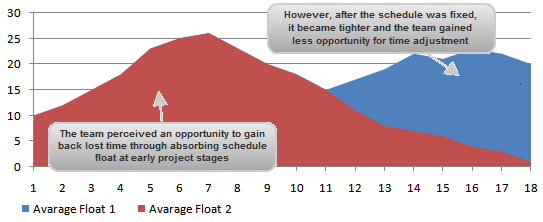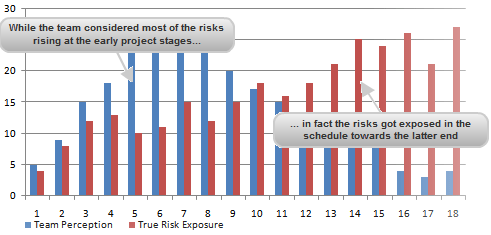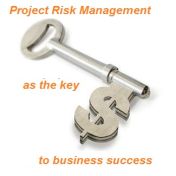Developing a More Realistic Project Schedule
 Scheduling can make or break a project. While the success of a project management initiative depends greatly upon both adequate planning and efficient execution, realistic scheduling is sometimes underestimated.
Scheduling can make or break a project. While the success of a project management initiative depends greatly upon both adequate planning and efficient execution, realistic scheduling is sometimes underestimated.
Some executives don’t consider the development of a realistic schedule as sound to success as it really is. Meanwhile, adding more accuracy and explicitness to the project schedule lets align the entire work with stakeholder expectations and accounts for true risk exposure.
By this article I continue my series about the primary mistakes in project management. Last time I wrote about inadequate planning and how to avoid it. Now I’m going to highlight the importance of developing a more realistic project schedule. In this article I describe a real-life example we’ve dealt with last year. I don’t call my work “case study” because I give just an overview, with no details on the approach employed for our project. Hope, my experience will help you be more successful.
What was Made Wrong and Why Review the Schedule
We were assigned to reviewing a small construction project sponsored by a local company. When we came in, the project was at the early stage of its life-cycle, with the big trouble in scheduling. The point was that the schedule didn’t represent the real-life situation, which led to numerous delays and uncertainties. The project team forecast the wrong completion date, which was out of alignment with the target date requested by the sponsor at the very beginning.
Our primary mission was to get the project back on track through reviewing the schedule and making it more aggressive yet achievable and aligned with the target date. Also we were assigned to facilitating the team in mitigating risks and their impact.
Criticize the Project Schedule
The first activity was to criticize the project schedule to ensure a more realistic forecast of how the work should be done. A sophisticated scoring algorithm consisting of multiple qualitative and quantitative metrics was used to analyze the schedule shortcomings against the constraints and float. The schedule was re-worked, corrected and improved by adding missing items, removing redundant logic, correcting irrelevant constraints, eliminating negative float, converting delays into true tasks.
As a result of these corrections, we got a new completion date of the project, which was 3 months later than the originally scheduled deadline.
Schedule Float Comparison
Additionally, a deeper understanding of how schedule float varied over time was obtained. Before the schedule corrections had been made, the project team expected schedule flexibility, i.e. they thought there were high amounts of float in the early stages of the project life-cycle. The team considered this flexibility an opportunity to adjust their activity and compensate the previously lost time.
In practice, however, the float analysis showed a quite different situation. The average float was calculated, and this data helped to compare and reject the original perception of front-end float availability and then to forecast a new, more realistic picture.
The following graph illustrates how the amount of average float changed to the right after the schedule corrections were made. In fact, the original float had never been available. With the corrections applied, the project schedule became tighter, and the team gained less opportunity for time adjustment via absorbing float.
Analyze Schedule Risk Exposure
Considering the new forecast, we decided that although we now had a much more realistic timeline with the new, later deadline, the opportunity for gaining back lost time without making significant schedule adjustments was no longer possible. We then began to carry out a risk analysis to understand the actual risk exposure of the schedule.
A series of risk assessment meetings were conducted to capture the team’s buy-in to both schedule uncertainty and key risk occurrences. The goal was to determine a risk-adjusted project completion date that the team was 100% confident of achieving.
Instead of relying on traditional risk analysis tools (such as tornado charts and histograms), a Monte Carlo Risk Analysis technique (random sampling and simulation) was employed in order to gain a clearer insight into where and when the true risks got arisen.
Team Perception vs. True Risk Exposure
The given below diagram shows how the team’s risk perception was compared to the true risk exposure on the timeline. Our analysis proved that while the team considered most of the risks arising at the early project stages, in fact the risks got exposed in the schedule towards the latter end. Thanks to this, the team saw the true schedule aggressiveness and understood the knock-on impact of risk accumulation to final project stages.
As it turned out, the key reason for such a contrast between the expectations and reality was the fact that the project schedule was dependent greatly on the in-field construction stage, which came up early in the project life-cycle. The time length of this stage was defined by a number of upstream schedules. The on-site team had to deal with changing deadlines and priorities, which impacted the project schedule in the long run and forced the risk log to be heavily loaded.
Generate a Schedule Acceleration Roadmap
In order to correct the given situation and fit the project schedule to the new forecast, we generated an acceleration roadmap that allowed moving project activities closer towards meeting the new deadline.
First, we held a meeting with the team to discuss and agree on a series of corrective actions that would accelerate the performance inside the team. Then, we offered an aggressive risk mitigation plan that would mitigate the risk exposure and minimize the schedule slippage as much as possible.
Also we worked with the sponsor and other top executives on some strategic issues and mutually agreed on the overall acceleration of the schedule. We gained their strong commitment for further action.
In general, our approach to accelerating the project schedule boils down to the following items:
- Reconsider tight disciplines that had the greatest impact to the project completion date
- Re-prioritize specific tasks that belonged to the critical path
- Provide more commercial incentives to team members and contractors
- Allocate additional engineering and financial resources to specific high-risk activities
- Speed up early site works
Additionally, we used a set of performance criteria to measure the success of each acceleration exercise.
As a result of implementing our roadmap we developed a more realistic project schedule that hit the forecast completion date and fitted the sponsor’s target date. The risks were successfully addressed, tight deadlines were met, and higher team performance was achieved. The project had been delivered on schedule.
















